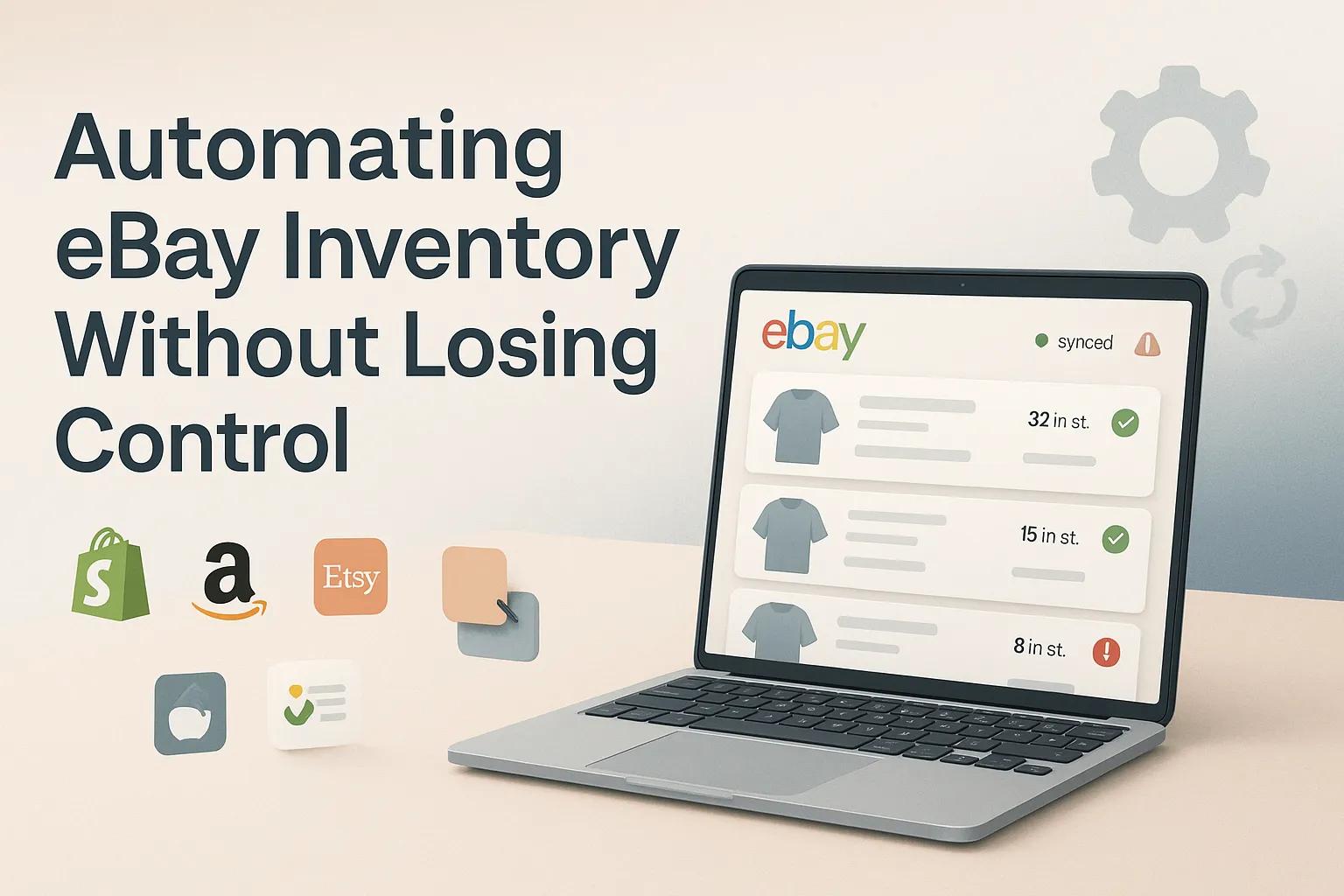
Automation Should Give You Control Not Take It Away
Most eBay sellers avoid automation because they’re afraid of losing track.
And they’re not wrong.
Bad automation leads to:
- Overselling
- Duplicate listings
- Out-of-stock products showing as available
But the right tools and structure let you automate without losing visibility. This blog shows how.
Why Manual Inventory Fails Past 30–50 SKUs
Manual updating = fine for new sellers.
But once you’re:
- Cross-listing
- Selling on multiple platforms
- Restocking frequently
…manual systems fall apart. Fast.
You’ll start seeing:
- Missed sales from out-of-stock products
- Angry messages from buyers when orders are canceled
- Wasted hours checking stock between platforms
Related: Cross-Listing Tips for Etsy, Amazon, eBay Sellers
Step 1: Centralize Your Inventory
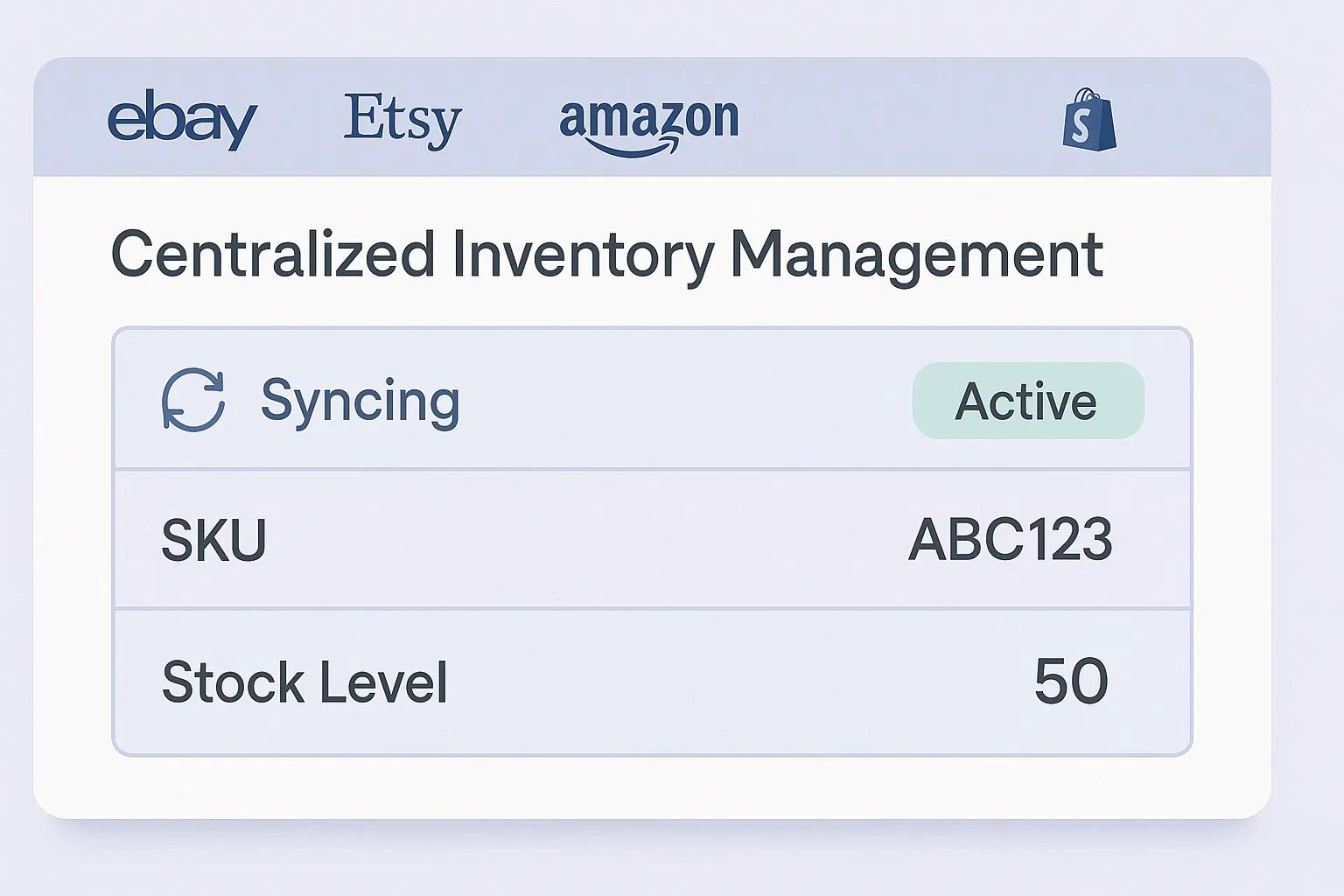
Start by choosing a single source of truth.
This could be:
- Google Sheets (for tiny stores)
- Shopify (if you sell DTC)
- An inventory management app
From there, connect eBay and any other platforms via an integration tool.
Best Tools to Try
| Use Case | Tool |
|---|---|
| Easy eBay syncing | InkFrog, SixBit |
| Cross-listing + inventory sync | List Perfectly, Vendoo |
| Full eCom + inventory backend | Sellbrite, Ecomdash |
Pro tip: Use SKUs consistently across every platform. That’s what powers clean syncing.
Step 2: Automate Stock Adjustments in Real Time
When one item sells, it should reduce quantity across all platforms.
That’s the automation you can’t skip.
Here’s how to set it up:
- List products with a shared SKU across all platforms
- Enable real-time syncing in your chosen tool
- Set low-stock alerts (e.g. notify you when stock hits 2 units)
What this prevents:
- Selling something on Etsy that already sold on eBay
- Overselling limited items
- Wasting time manually adjusting listings
Related: What to Automate First in Your Service Business
Step 3: Use Rules for Auto-Endings and Relisting
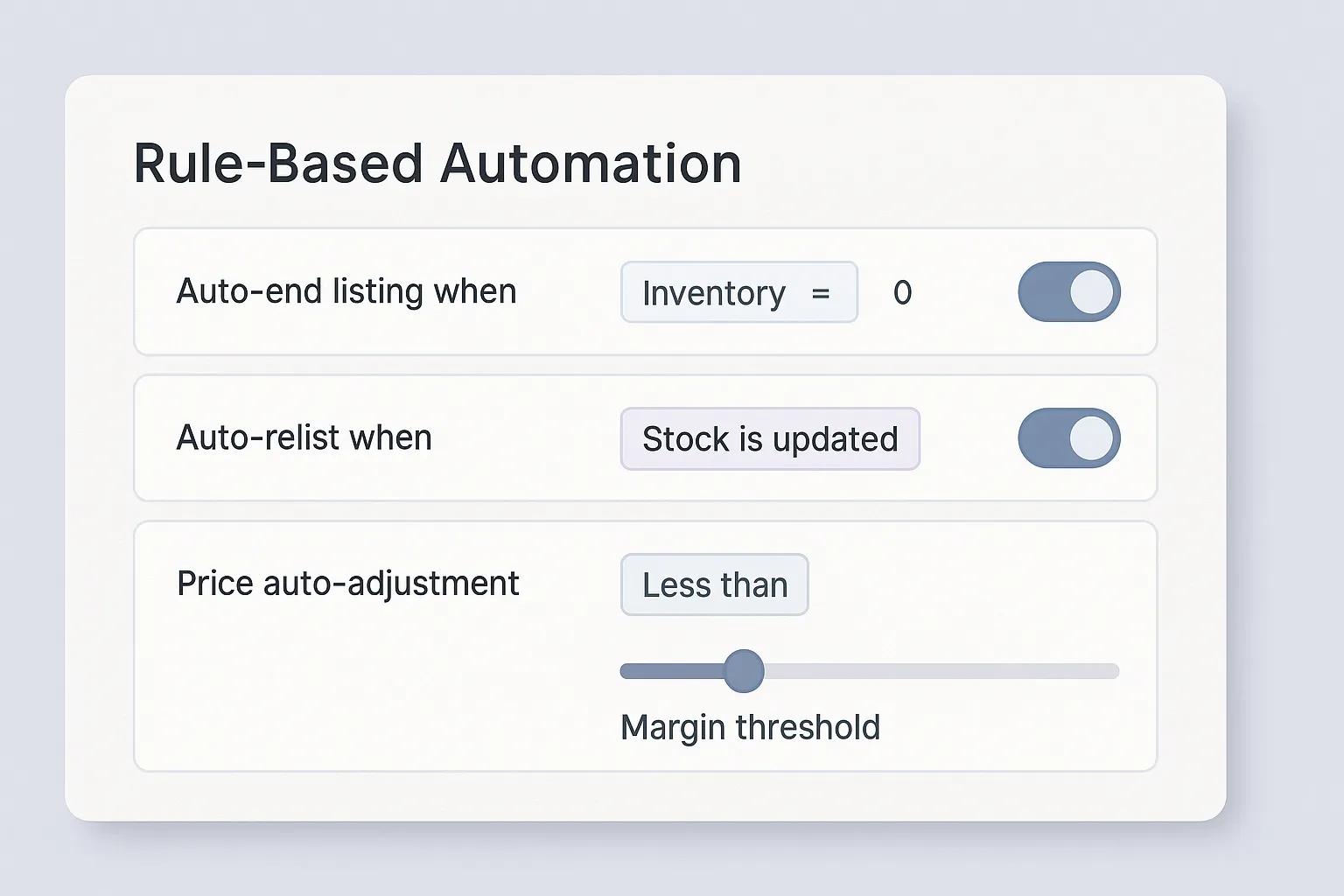
Most sellers think automation means listings run forever.
Bad idea.
Instead, set rules:
- End listing when inventory hits 0
- Relist only when new stock is confirmed
- Auto-update prices based on your margin range
Good tools let you set thresholds, so you’re not constantly logging in to adjust things manually.
Related: Fix This in Your Product Listings to Rank Better
Step 4: Keep Visibility Without Micromanaging
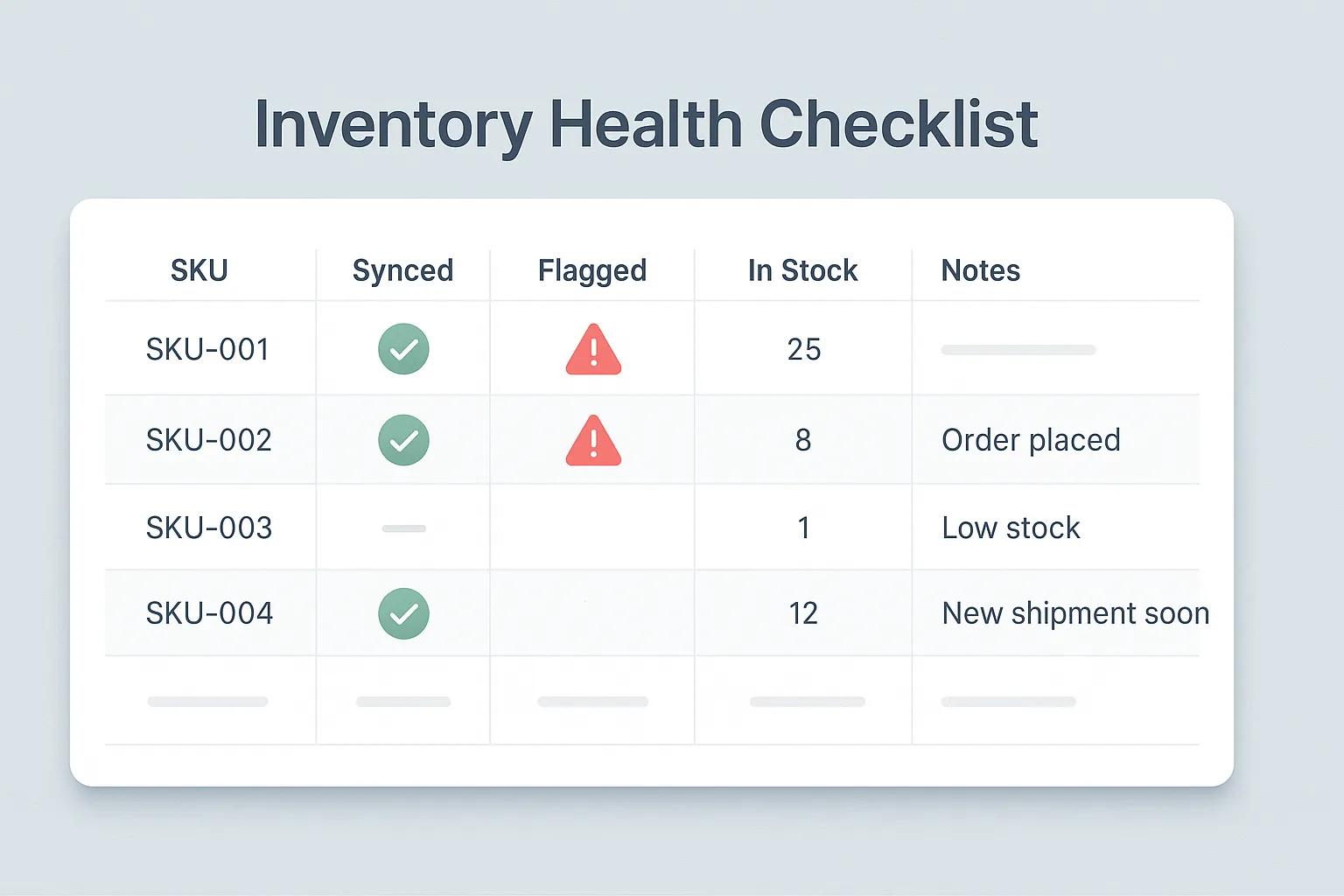
Don’t blindly trust the tool. Build a lightweight audit process.
Here’s a simple weekly checklist:
- Review flagged listings (out of stock, errors)
- Check listings with unusually low or high views
- Confirm stock levels match physical count for top 10 SKUs
- Review unlinked or unsynced items (these often break sync)
Set this as a recurring calendar task 15 mins a week is enough.
Related: Tracking the Right Metrics in Paid Funnels
Step 5: Automate Reordering (Only When You're Ready)
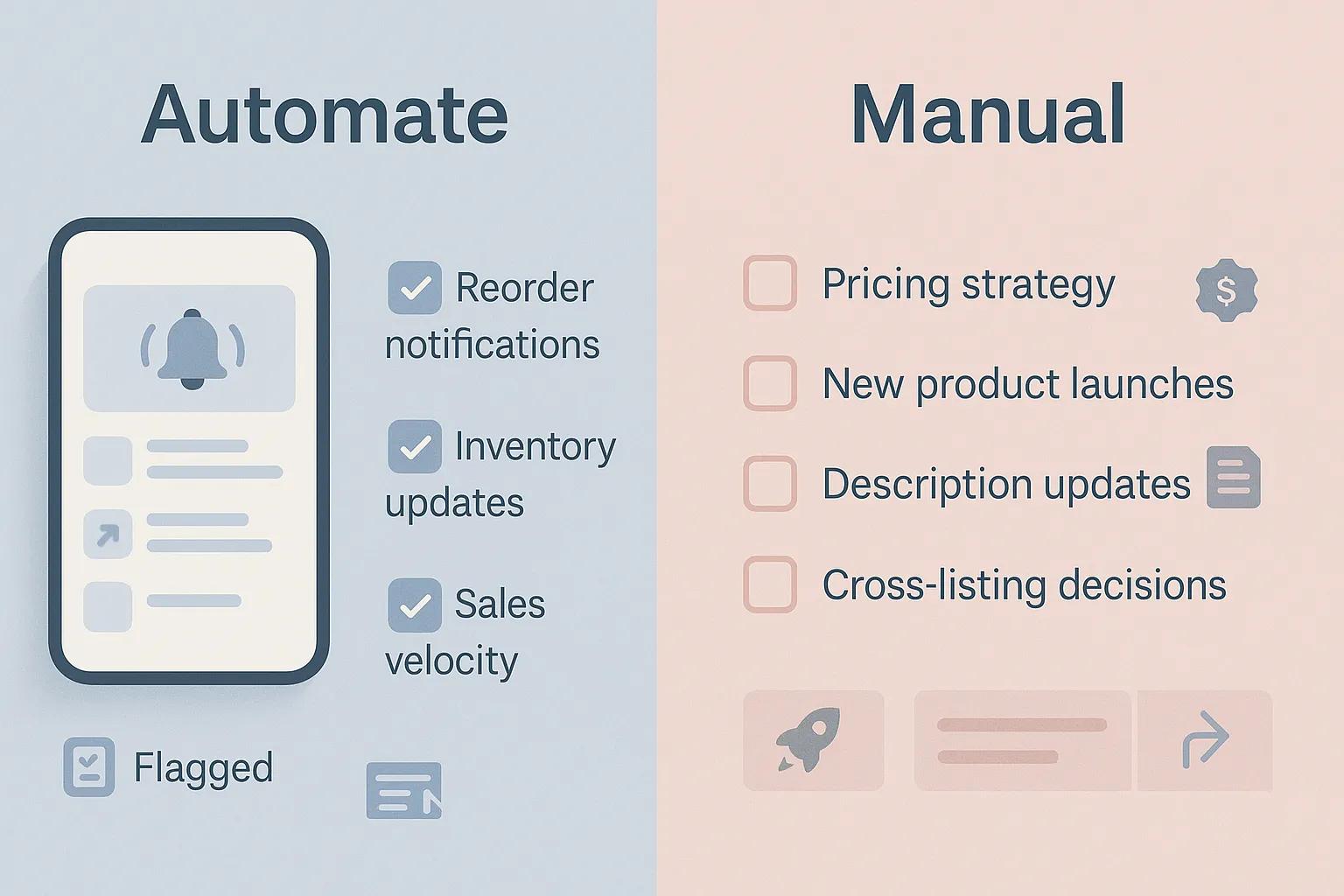
This one’s optional but powerful if you carry stable SKUs.
Tools like Stocky (Shopify) or Katana can predict reorder points based on:
- Sales velocity
- Lead time
- Supplier pricing
You can get notified when it’s time to reorder or set rules to do it automatically.
Only use this if your suppliers are consistent.
Related: Best Shopify Apps That Actually Drive Sales
What NOT to Automate
Not everything should be automated. These still need your judgment:
- Pricing strategy
- New product launches
- Description updates (keep it human)
- Which products you cross-list where
Automation should free up time not disconnect you from strategy.
Related: How I Set Up a Lead Funnel With 3 Tools
Conclusion: Automate the Actions, Not the Decisions
Inventory management is where most eBay sellers either stall out or burn out.
But you don’t need to choose between chaos and full automation.
Here’s the smarter middle ground:
- Centralize inventory with SKUs that sync across platforms
- Automate stock updates in real time
- Set rules for relisting and alerts
- Build a lightweight weekly audit
- Only automate reorders if you trust the supply chain
Control comes from seeing what matters not touching everything manually.

Custom video production at scale
Aneeverse covers all video needs whether you're telling your brand story, launching a product or running ads. Discover how we can help you scale.
